This post may contain affiliate links, from which we earn an income. Click here to read our affiliate policy.
Top Things to See & Do in Montenegro
Montenegro is a small and incredibly diverse Balkans country on the shimmering Adriatic Coast. As yet, the tiny country is mainly undiscovered, making it perfect for an adventure!
We spent a month in Montenegro exploring the four corners, from historic Kotor to the majesty of the Durmitor National Park. Whether you’re a nature enthusiast, a history buff, or simply looking for a unique travel experience, Montenegro offers something for everyone.
Our Montenegro guide covers all the top spots to see and the best things to do, and we share a few off-the-beaten-path places, too. Join us as we take you on a tour of Europe’s best-kept secret!
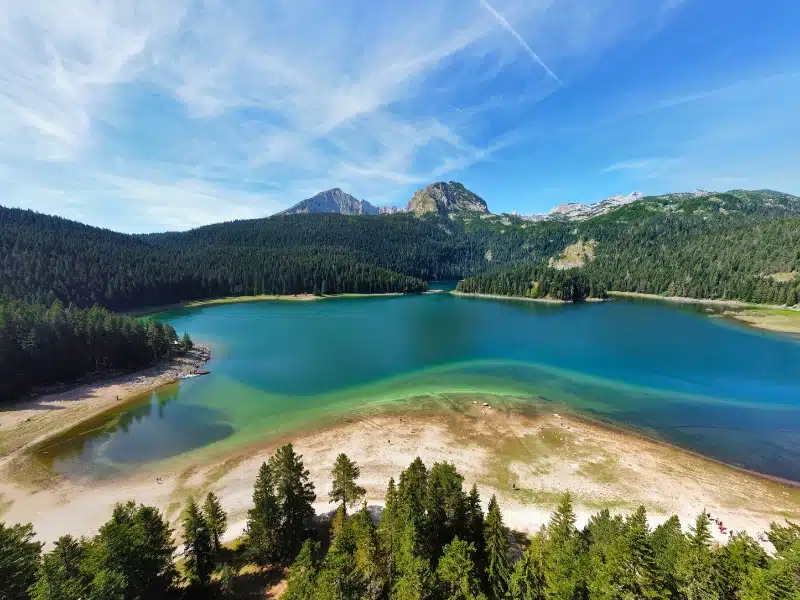
The Bay of Kotor
Often referred to as Europe’s southernmost fjord, the Bay of Kotor is a dramatic natural harbor surrounded by high cliffs, rugged mountains and dotted with medieval towns. The whole area has Mediterannean vibes, with laid-back beach clubs, sailing and great seafood.
Kotor
Kotor, a historic UNESCO town on Montenegro’s Bay of Kotor, is the star attraction of the bay. The fortified Old Town is made for meandering, dipping in and out of the small shops and cafés that line the narrow streets cobbled with local pink stone. Don’t miss the Cathedral of St. Tryphon, walking along the historic walls, and San Giovanni Fortress, which has stunning views overlooking the bay and town below.
After a day of sightseeing, enjoy local dishes at one of Kotor’s many restaurants, where seafood and Montenegrin specialties are highlights.
There are often large cruise ships in Kotor’s small port, sometimes more than one. When we visited over a few days, the old town was overwhelmed with visitors disgorging from the vast Virgin Voyages and Celebrity Cruises ships that dwarfed its ancient walls. Use this handy cruise ship tracker to work out when is the best time to visit.
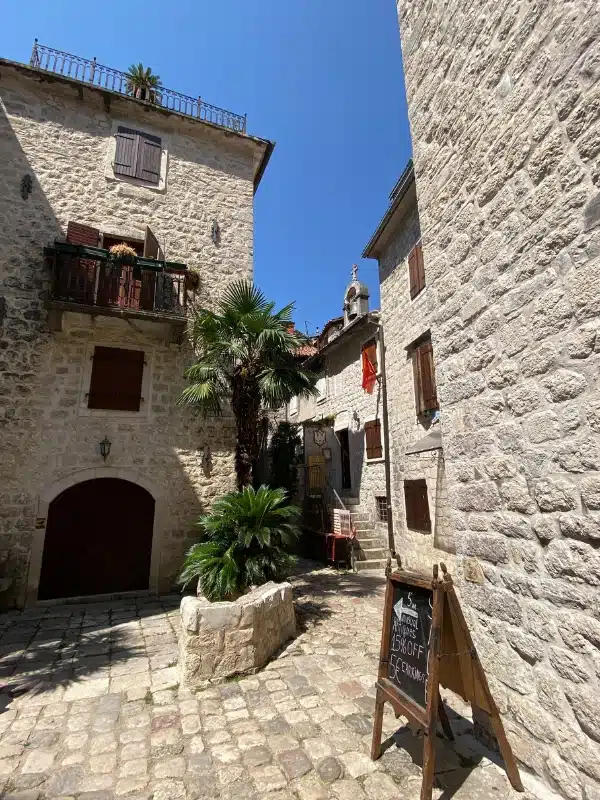
Perast
Perast is known for its stunning baroque architecture and beautiful waterfront setting. If you’re driving the E65 road around the inner bay (and you should just for the spectacular views), Perast is the first town you’ll see from up high, as it lies directly across the water from the Verige Strait.
Once part of Venice, Perast is often called the ‘Pearl of Venetian Baroque’ because the town has many Baroque-style Venetian buildings.
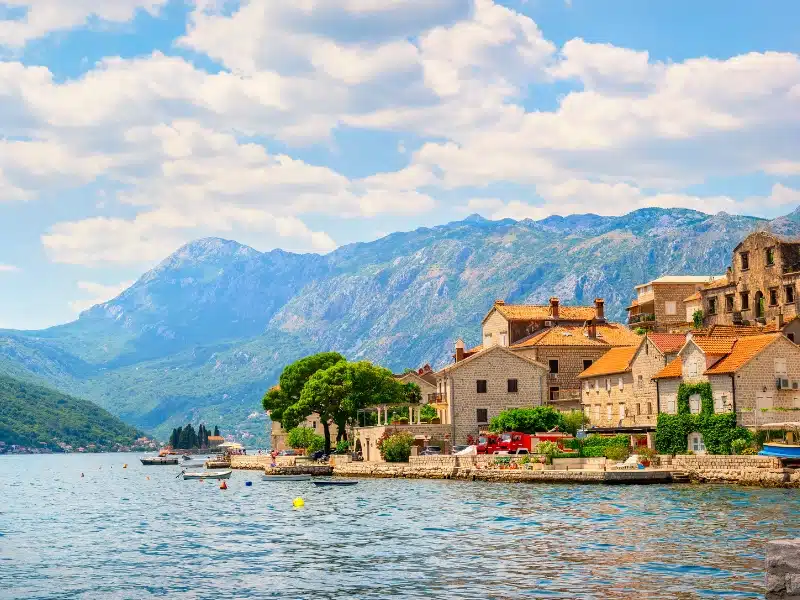
Our Lady of the Rocks
Our Lady of the Rocks fascinated me as soon as I saw it glinting in the sunlight. An artificial islet, it is home to the beautiful Church of Our Lady of the Rocks, which houses a venerable 15th-century icon of the Virgin Mary and a small museum, both named after the same legend that inspired its creation.
According to local lore, the islet was formed by sailors who, after discovering an image of the Madonna and Child on a rock in the sea, vowed to build a church there. For centuries, seamen have continued to add rocks to the islet, a tradition celebrated annually in July with Fašinada, where boats deposit stones around the islet to maintain it.
For a few euros, you can take a boat trip from the harbor in Perast to Our Lady of the Rocks and the neighboring islet of St George or take a stand-up paddleboard tour.
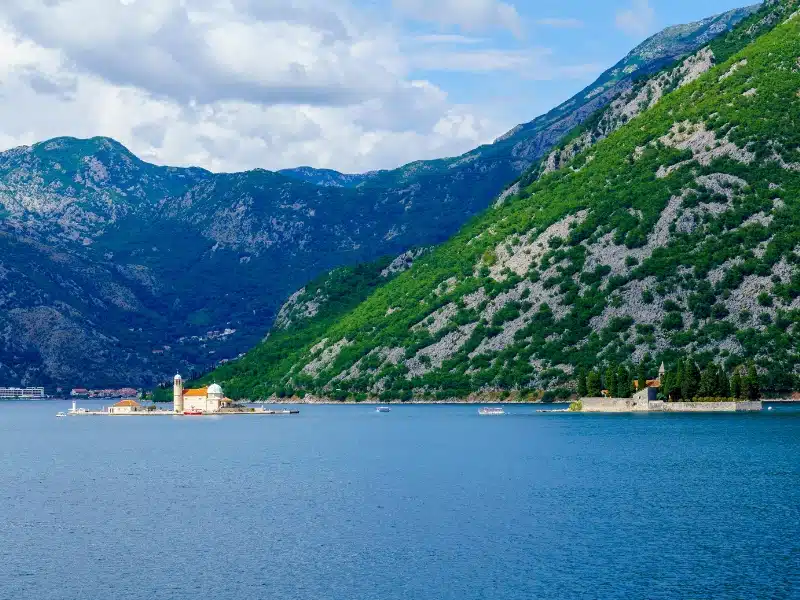
Kotor’s Beaches
At first glance, it doesn’t seem possible that the sheer cliffs plunge into the Adriatic Sea and leave room for sandy beaches. But there are several beautiful spots for sunbathing, swimming, and enjoying the serene waters.
Kotor Beach: Close to the Old Town, Kotor Beach is a convenient and lively stretch perfect for those who want to combine history with seaside relaxation.
Morinj Beach: In a picturesque part of the bay, Morinj Beach is set against a backdrop of lush greenery and offers clear, inviting waters. It’s an excellent spot for a peaceful day out, whether you want to swim, relax with a book, or simply enjoy the scenic views of the bay.
Plavi Horizonti Beach: The sandy beach here dips into shallow waters, making it ideal for families. It’s also a popular spot to see a magnificent sunset.
Orahovac Beach: Orahovac is a small village located along the bay. It boasts one of the few pebbly beaches in the area. This beach is family-friendly, with shallow waters ideal for children.
Verige Beach: This wild beach is a hidden gem in the narrowest part of the Bay of Kotor and the pebbly beach has crystal-clear waters.
Bajova Kula: A small, pebbly beach backed by lush vegetation and accessible from both land and sea. Sunbeds, umbrellas, and music make this beach very attractive and popular.
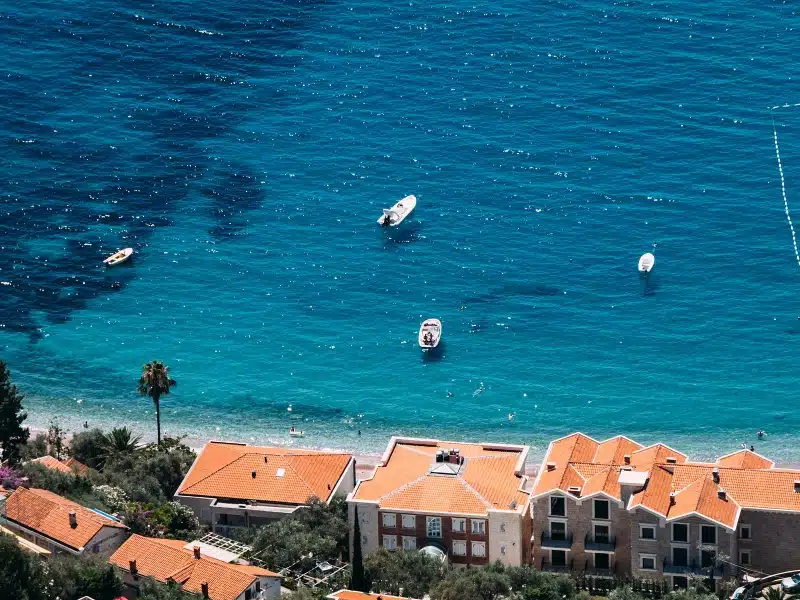
The Blue Cave
The Blue Cave, or Plava Špilja, is a large sea cave located on the Adriatic side of the Lustica Peninsula and named for the vibrant blue light that illuminates its interior, a phenomenon caused by sunlight reflecting off the sandy seabed and filtering through the water.
The Blue Cave can only be accessed by boat from Herceg Novi, or on this highly-rated half-day boat trip from Kotor, which also takes in Our Lady of the Rocks, Mamula Island and some of the former Yugoslavia’s secret submarine tunnels. Once inside the cave, the water glows a brilliant blue, perfect for swimming and snorkeling.
Tivat
Tivat is a picturesque coastal town on the outer Bay of Kotor. Known for its beautiful landscapes, modern marina, and historical sites, Tivat has recently become popular with tourists and yachties.
Porto Montenegro is a big draw. The luxury marina and residential complex have transformed the town into a major center for nautical tourism in the Adriatic. The marina offers state-of-the-art facilities for yachts and mega yachts, along with upscale shopping, dining, and accommodation options. The marina’s waterfront promenade is a lively area where people come to admire the mega yachts and their celebrity passengers.
Beyond the marina, Tivat boasts several historical and cultural sites. The Buca-Lukovic Museum & Gallery, housed in a historic palace, showcases local art and history. The Summer House Buca, located in the heart of Tivat, is a historical building dating back to the Renaissance period and now serves as a cultural venue for exhibitions and performances.
Tivat is also home to a number of beautiful beaches, offering both sandy and pebble options. Plavi Horizonti, located near the village of Radovići, is one of the most popular beaches in the area, known for its clear waters and sandy shores. The town’s coastal location also provides opportunities for water sports, sailing, and exploring nearby islands such as St. Mark’s Island and the Island of Flowers.
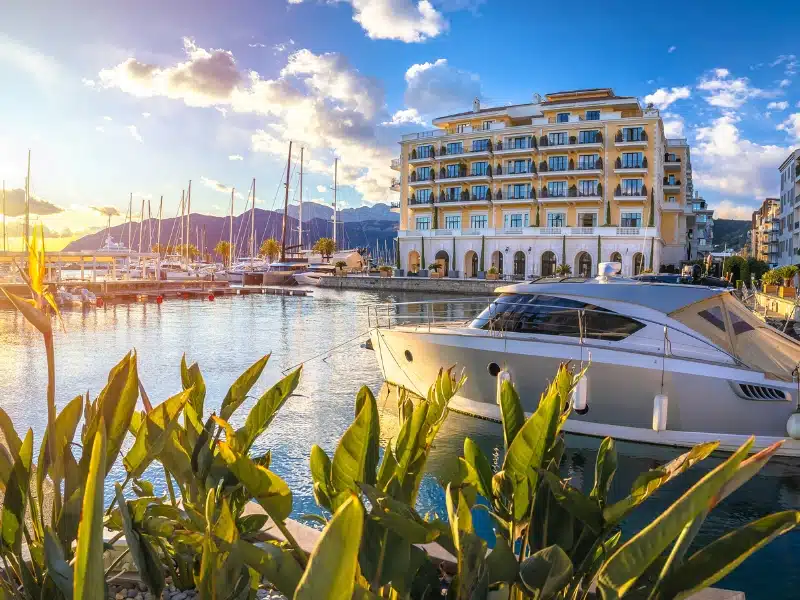
Hike the Ladder of Kotor
The Ladder of Kotor is a historic mile track that ascends the steep slopes of the Lovćen Mountain, connecting the coastal town of Kotor to the higher-altitude area of the mountain. The route is famous for its series of 70 switchbacks, which resemble a ladder or staircase, providing both a challenging hike and spectacular panoramic views.
Distance and Duration: The hike is approximately 14 kilometers return on a semi-circular route from the trailhead on Tabačina Road in Kotor Old Town. You can shorten the route to 9km by returning from the top of the old Kotor fort trail (visible on Google Maps). The shorter route will take around 4 hours, depending on your pace and how many photos you stop for!
Difficulty: The trail is considered moderately to challenging due to its steep inclines and uneven terrain. It requires a good level of fitness and appropriate hiking gear.
Elevation Gain: The hike involves a significant elevation gain, climbing from sea level to 1,000 meters (3,300 feet) above sea level.
Tips: Start early in the day to avoid the midday heat. Wear sturdy hiking boots or trainers, and take plenty of water, snacks, and sunscreen. The trail is generally well marked but take a phone for access to maps.
Hike to Fort Vrmac
The Fort Vrmac hike is a popular trekking route up the so-called Franz Joseph Stairs. It offers a combination of historical exploration, Austro-Hungarian engineering, and stunning views. The hike leads to Fort Vrmac, a World War I fortification situated on the Vrmac Ridge, which separates Kotor Bay from the Lustica Peninsula. It offers panoramic views over the Bay of Kotor and the surrounding areas.
Distance and Duration: The hike to Fort Vrmac is approximately 6.6 kilometers round-trip and typically takes 3-4 hours to complete, depending on your pace. The trailhead is on the first hairpin bend on the P22 road out of Kotor.
Difficulty: The trail is considered moderate to challenging. The ascent involves a significant climb with uneven terrain and steep sections, so a good level of fitness is recommended.
Elevation Gain: The hike involves a substantial elevation gain, climbing from almost sea level to about 1,000 meters (3,300 feet) at the fort.
Tips: Start early in the day to avoid the midday heat. Wear sturdy hiking boots or trainers, and take plenty of water, snacks, and sunscreen. The trail is generally well marked but take a phone for access to maps.
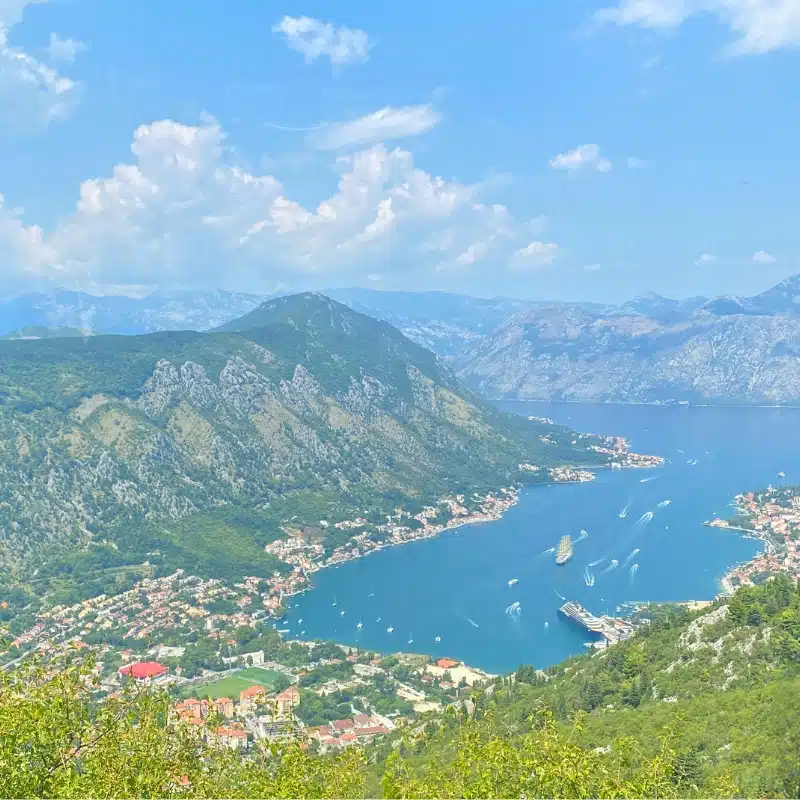
Kotor-Lovćen Cable Car
If you want to get high enough for panoramic views of the bay without hiking or driving the crazy P1 Serpentine road (you can watch us make that mistake here!), the Kotor cable car ascends over nearly 3,900 meters (12,795 ft) to an altitude of 1,316 meters (4,316 ft) to the Lovćen National Park.
The national park is home to the famous Njegoš Mausoleum on the Jezerski peak, at 1,660 meters (5,446 ft), making it the highest such building in the world. There are panoramic views of the surrounding mountains, the Bay of Kotor, and the Adriatic Sea, and access to easy hiking and cycling routes in the park where elevation gain is minimal.
This excellent guided tour takes in the cable car, Our Lady of the Rocks and the town of Perast, helping you see more of Montenegro in less time!
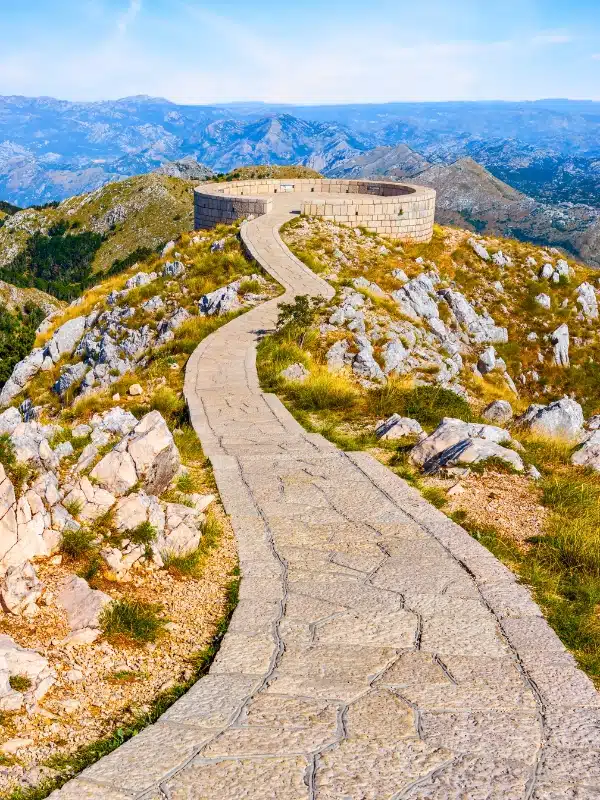
Make sure you have travel insurance you can trust when visiting Montenegro. We recommend True Traveller for their 5-star TrustPilot reviews, variety of cover options, best activities cover as standard, great prices, and excellent service.
Durmitor National Park
The Durmitor National Park a UNESCO World Heritage Site and one of Montenegro’s premier natural attractions, celebrated for its outstanding natural beauty and ecological importance. Located in the northern part of the country, the park centers around the Durmitor mountain range, covering an area of approximately 39,000 hectares.
The park’s rugged terrain includes dramatic rock formations, deep gorges, and karst landscapes, all dominated by the Durmitor massif. This massif features several peaks plus 2,000-meter peaks, including Bobotov Kuk, the highest peak in Montenegro at 2,523 meters (8278 ft).
Among the park’s notable features are its glacial lakes, known as the ‘eyes of the mountain’, with the dark and reflective Black Lake, looked over by Meded the Great Bear peak, being the most famous.
Durmitor is also home to the Tara Canyon, the deepest river canyon in Europe and the second-largest canyon in the world after the Grand Canton, at 1,300 meters (4,300 feet) deep. The canyon offers spectacular views and opportunities for white-water rafting. The Piva River, another significant waterway in the park, is celebrated for its clear waters and stunning scenery.
Much of the park is densely forested, with alpine meadows and rocky terrain. This landscape is home to brown bears, wolves, lynx, European wildcats, and chamois, as well as various bird species like golden eagles, peregrine falcons, and Griffon vultures.
The Durmitor Ring
The Durmitor Ring is a panoramic road route designed to showcase the best of Durmitor National Park. An incredibly scenic drive or an awesome route for a Montenegro bike tour, it is a wonderful way to experience the natural beauty of Durmitor, especially if you are not able to undertake longer hikes.
The Durmitor Ring is not a single continuous road but rather a series of interconnected routes that form a loop around the park, starting in Žabljak. The entire circuit is about 100 kilometers (62 miles), includes several mountain passes, and can take several hours to complete, depending on how often you stop and your driving speed.
RELATED POST: Durmitor National Park: Explore Montenegro’s Top Natural Wonder
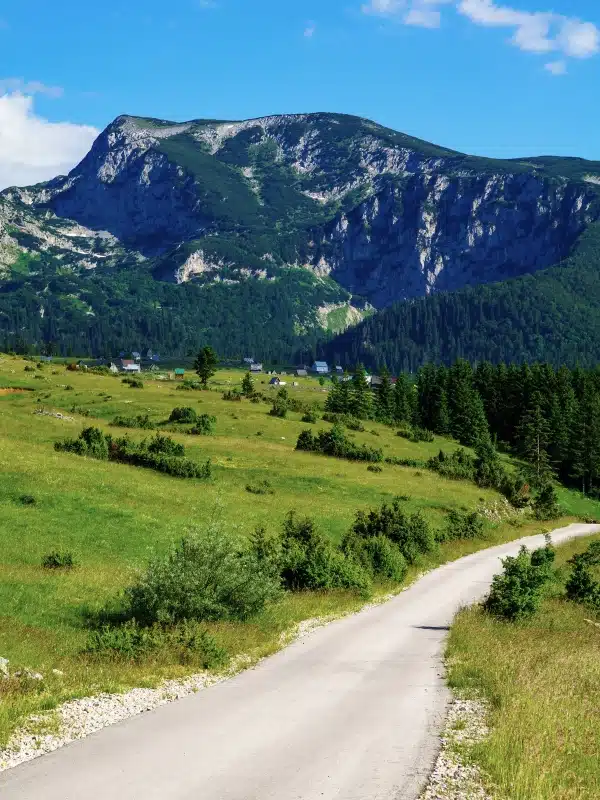
Hiking in Durmitor
An easy hike is around the Black Lake, Crno Jezero, one of Montenegro’s most iconic natural attractions. The glacial lake is located in the heart of the Durmitor National Park near Žabljak and is a lively gathering point for visitors, with plenty of nearby parking, kayak, and paddleboard hire, and lakeside places to stop for a bit to eat, often with live music in the summer.
Hiking around Black Lake will take a couple of hours at most. If you want something a bit longer but not too difficult, the three lakes route covering Black Lake, Zminje Lake, and Barno Lake is an easy hike with little elevation gain along a forest trail, which will take 2-3 hours, depending on your pace.
The route to the Tara River Canyon is also popular, offering breathtaking views of one of Europe’s deepest canyons. This hike can be combined with white-water rafting for a full adventure experience. Serious hikers will want to conquer Bobotov Kuk and Prutaš or hike out to the Škrka lakes in the breathtaking Škrčka Valley.
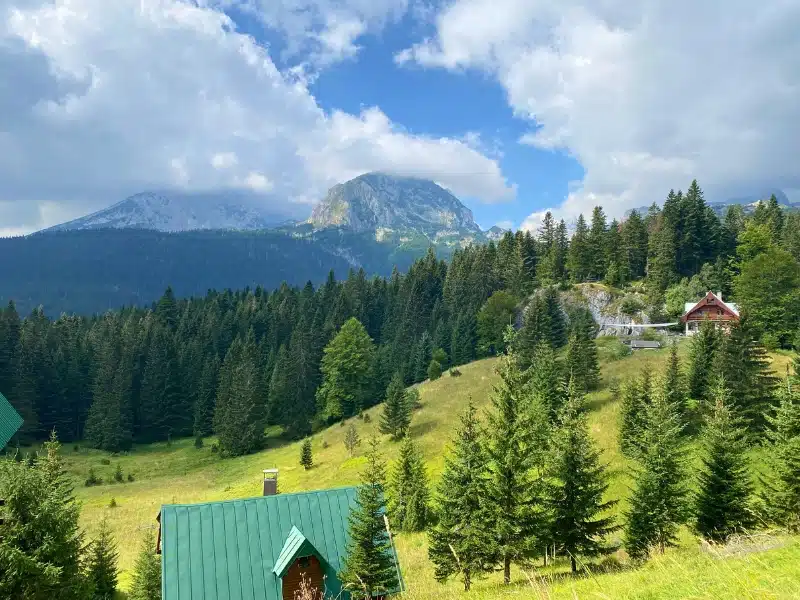
White Water Rafting
White-water rafting on the Tara River is one of Montenegro’s most exhilarating and scenic outdoor adventures. Flowing through the Tara River Canyon, which is one of the deepest canyons in Europe, this river offers not only thrilling rapids but also stunning natural beauty.
Not far from Žabljak is the impressive Đurđevića Tara Bridge, which provides a focal point for the local rafting companies. There are a few guest houses and campsites with rooms around the bridge, all of which offer white water rafting experiences starting upriver.
It’s a lot of fun but quite hard work! The raft guides will encourage you to do a bit of cliff jumping and swimming in the icy waters between the rapids, which are the best bits!
If you’re looking to maximise your time in Montenegro, our recommended Tara whitewater rafting day trip picks up from Kotor, Budva, Tivat and Herceg Novi.
Zip Lines
There are three zip lines over the Tara River Canyon next to the Đurđevića Tara Bridge. The Red Rock zip line is the shortest and lowest at 350 meters. It takes just 40 seconds to cover the distance at around 50km/h. The Kljajevića Luka zip line is the middle option taking 90 seconds to cover the 740m with a top speed of 40km/h.
The Extreme zip line was our choice! With a ride time of over two minutes to cover the 1,050 meters at 80-120km/h, this was the adrenaline rush we wanted! We screamed all the way and then went again!
You can book online, but you might get a better deal if you turn up and pay on the day. All the zip line companies will take cash or a card.
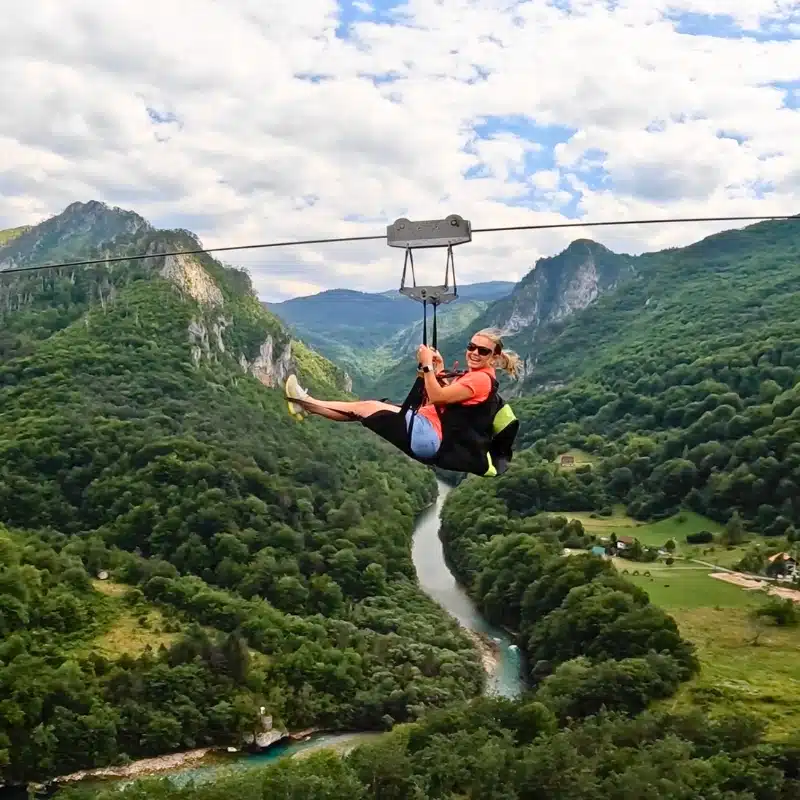
Other Durmitor Adventures
The Durmitor National Park also offers rock climbing, tandem paragliding, canyoning, mountain biking, and horse riding. For more information, visit the national park visitor center in Pitomine.
The Adriatic Coast
Montenegro’s Adriatic coast is a stunning stretch of shoreline renowned for its dramatic landscapes, charming coastal towns, and crystal-clear waters and should definitely be on your Montenegro itinerary. Stretching approximately 295 kilometers (183 miles) from the Croatian border in the northwest to the Albanian border in the southeast, the coast offers a diverse array of experiences for visitors.
Budva
The coastal town of Budva is famous for its lively atmosphere, bustling nightlife, and long sandy beaches. Budva’s Old Town, surrounded by ancient city walls, is a maze of narrow streets filled with cafes, shops, and historical sites. The town’s beaches, such as Slovenska Plaža and Mogren Beach, are popular for sunbathing and water sports.
Just south of town is Milocer Beach, also known as King’s Beach. This sandy stretch was historically a royal getaway, and it still retains an air of exclusivity. The beach is restricted to resort guests and those renting a very expensive (€100+) sunlounger for a day, but we think it’s worth the splurge!
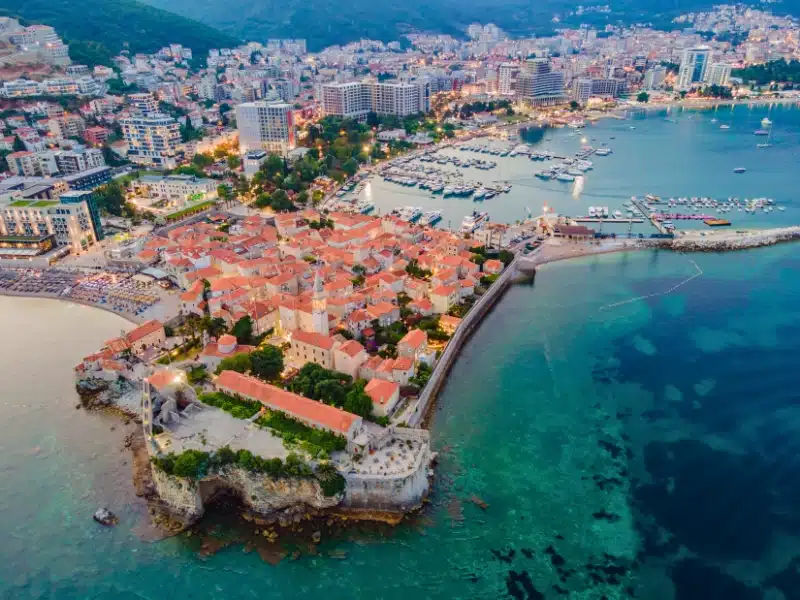
Sveti Stefan
Further south, the town of Sveti Stefan stands out with its iconic island resort, which is a former fishing village turned luxury hotel. The island, connected to the mainland by a narrow isthmus, is renowned for its picturesque appearance and exclusive atmosphere.
South of town is Crvena Glavica Beach, known for its distinctive red cliffs and offering a more rugged and natural beach experience. The crystal-clear waters are ideal for swimming and snorkeling, and you’ll enjoy a laid-back beach day here.
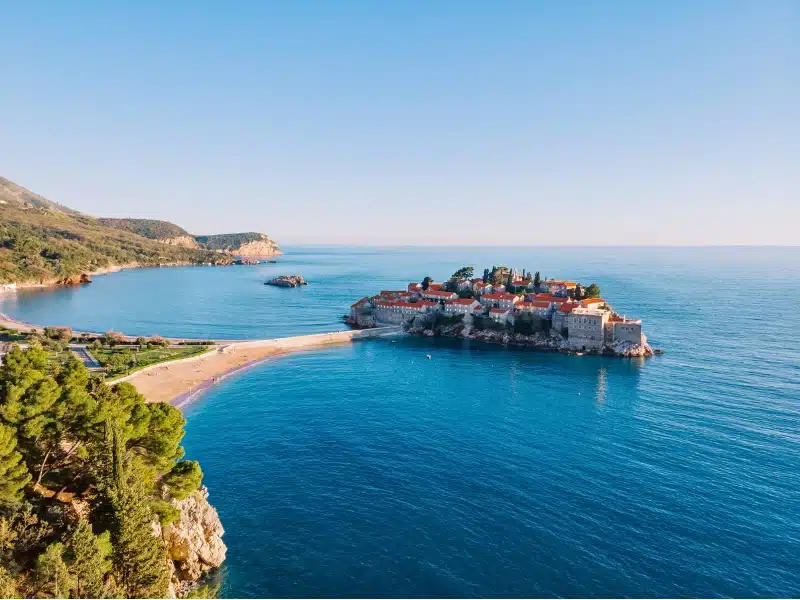
Bar
The port city of Bar is steeped in history, with its origins dating back to ancient times. The Old Town of Bar, known as Stari Bar, is a major historical site. This medieval settlement, located on a hill overlooking the modern city, features well-preserved ruins of ancient fortifications, churches, and houses. The city’s main beach, Šušanj Beach, is a popular spot for swimming and sunbathing.
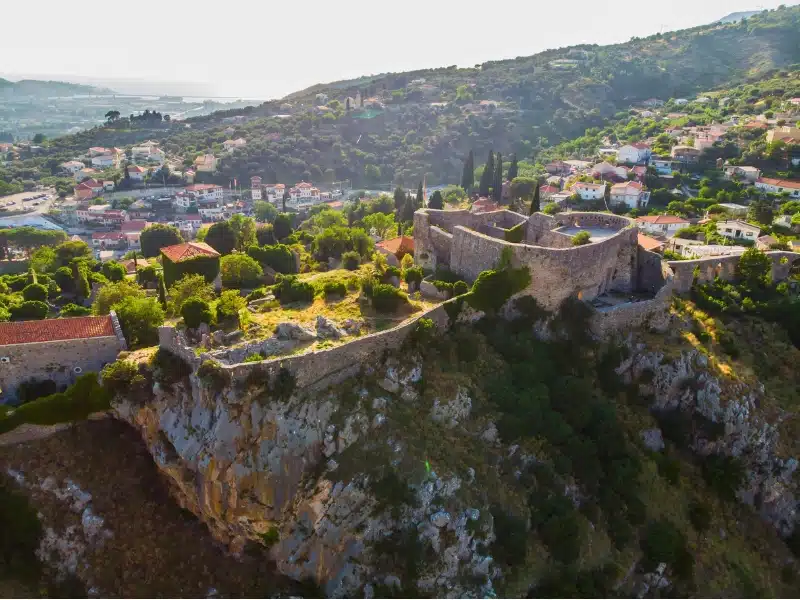
Ulcinj
The town of Ulcinj, located near the Albanian border, offers a different character with its long sandy beaches and a rich history of diverse cultural influences. The Old Town of Ulcinj is an ancient settlement with a mix of Venetian, Ottoman, and Albanian heritage. The nearby Velika Plaža, one of the longest beaches on the Adriatic coast, is ideal if you like wide, sandy beaches and water sports, and Cristal Beach, only accessible from the sea, is a great spot to explore.
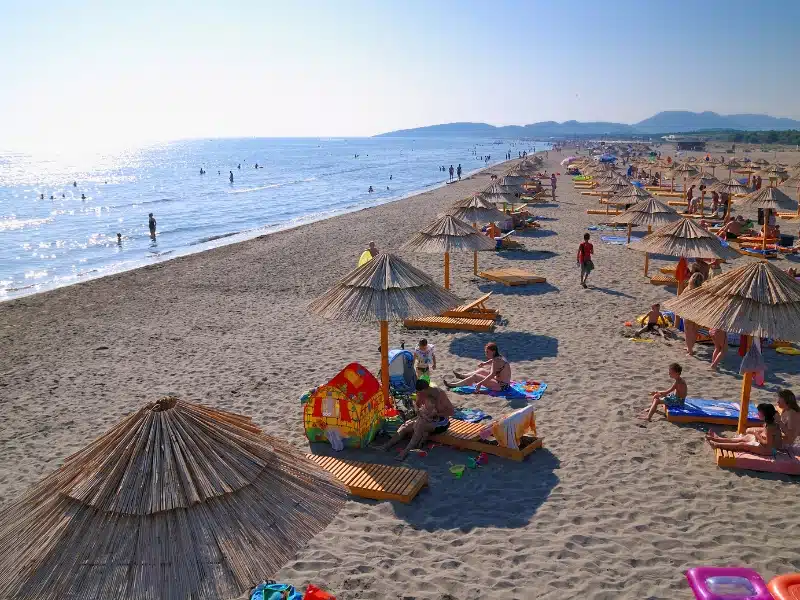
Other Balkans Travel Ideas
Montenegrin Highlands
The Montenegrin highlands are an off-the-beaten-path region of rugged terrain and dramatic landscapes, forming a significant part of Montenegro’s natural beauty. Located primarily in the northern and central parts of the country, these highlands feature some of Montenegro’s most stunning and remote areas, including the Durmitor mountain range, the Prokletije (Cursed Mountains), and the Bjelasica Mountains.
The Prokletije Mountains, part of the Dinaric Alps, are situated in the southeastern part of Montenegro and extend into Albania and Kosovo. This range is characterized by its rugged and remote terrain, with steep cliffs, deep valleys, and high peaks like Maja Jezercë. The Prokletije Mountains are less frequented by tourists, providing a more pristine and tranquil environment.
The Bjelasica Mountains, located between the Tara River Canyon and the town of Kolašin, are known for their rolling hills, lush forests, and alpine meadows. This area is popular for activities such as hiking and skiing and features beautiful lakes like Biogradsko Lake, which is part of the Biogradska Gora National Park.
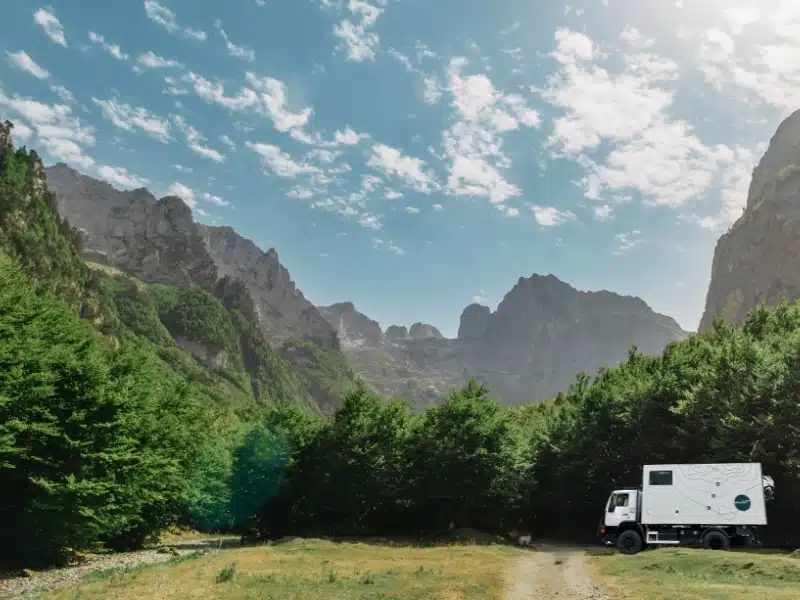
Looking for the best SIM card deals in Europe for your trip? Check out our guide to the best data SIMs in Europe and get the best deal for your trip to Montenegro.
Montenegrin Cuisine
Montenegro’s cuisine reflects the region’s diverse influences, combining elements from Mediterranean, Central European, and Balkan culinary traditions. It is known for its use of fresh, locally sourced ingredients, including a variety of meats, seafood, vegetables, and herbs.
As is common across the Balkans, there is a lot of emphasis on meat dishes. Grilled meats, or roštilj, are particularly popular. You’ll see ćevapi, small, grilled sausages made from minced beef, lamb, or pork, and pljeskavica, a large, seasoned beef patty often served with onions and peppers, on every restaurant menu.
Seafood also plays a significant role in Montenegrin cuisine, especially along the Adriatic coast. Grilled fish and seafood stew are common, with dishes such as brodet (a rich fish stew) and grilled calamari being favorites. Black risotto, made with cuttlefish ink, is another popular dish, reflecting the influence of Mediterranean cooking.
Montenegrins also love their bread and pastries. Pita is a layered pastry often filled with cheese, pumpkin, or apples, and burek is a popular baked dough with filling. Koljivo, a sweet dish made from boiled wheat, sugar, and nuts, is traditionally served at religious and festive occasions.
Cheese is another important ingredient. Njeguški pršut, a type of dry-cured ham from the Njeguši region, is highly prized for its rich flavor. Kackavalj, a semi-hard cheese made from sheep’s milk, is commonly used in cooking or enjoyed on its own.
Desserts are often simple and made using local ingredients. Tufahija, a sweet dish made from stuffed apples with walnuts and sugar, and baklava, a pastry made from layers of phyllo dough and nuts, reflect the region’s culinary influences.
Traditional Montenegrin meals are often accompanied by locally produced wines and brandies. Vranac, a red wine made from a native grape variety, is a popular choice, while rakija, a potent fruit brandy, is commonly enjoyed as an aperitif or after a meal.
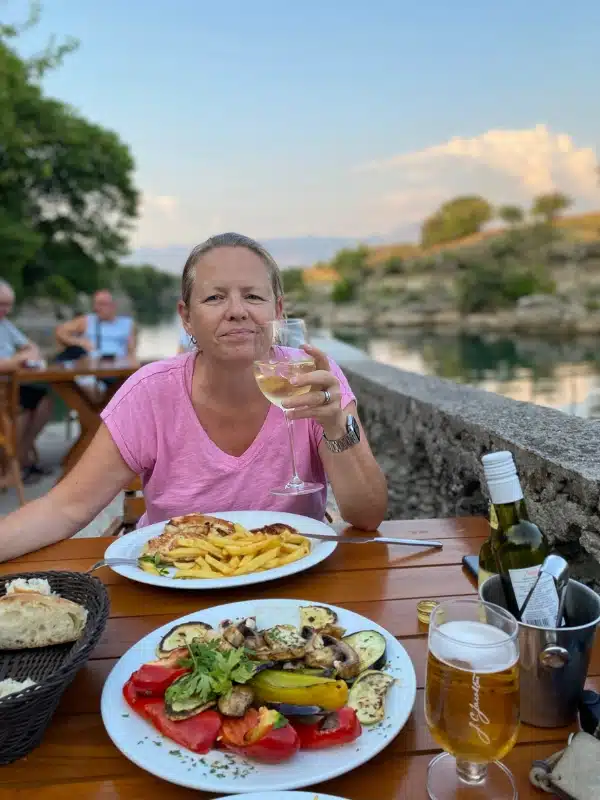
Montenegro Express
The train journey from Belgrade to Bar is a scenic trip that traverses the diverse landscapes of Serbia and Montenegro. The route, which covers approximately 476 kilometers (296 miles), is known for its 254 tunnels, 435 bridges, and picturesque views as it winds through mountainous terrain and alongside stunning coastlines.
The journey begins at Belgrade’s central train station, the capital of Serbia. As the train heads south through Serbia, passengers are treated to views of rolling hills, verdant countryside, and the historic towns and villages that dot the landscape.
The journey takes you through the Morava River Valley, offering picturesque scenery of lush valleys and flowing rivers before passing through several Serbian towns, including Niš and Prokuplje, each with its own unique character and historical significance.
After crossing into Montenegro, the route becomes even more dramatic. The train travels through the Montenegrin mountains and crosses the Tara River Canyon. The Montenegrin highlands offer breathtaking vistas, with deep canyons, lush forests, and snow-capped peaks in the winter months.
Approaching the Montenegrin coast, the scenery shifts to the stunning Adriatic coastline. The train follows the contour of the coastline, providing passengers with spectacular views of the sea and rugged cliffs. The journey culminates in the picturesque port city of Bar, known for its historic sites and Mediterranean atmosphere.
The journey takes 11 hours, and the Man in Seat 61 says to sit on the right-hand side of the train going south and the left-hand side going north for the best scenery. Daytime trains (Tara) are 2nd class only and usually operate a café-bar. Sleeper trains (Lovcen) run with couchettes and sleeper beds.
You can’t book online, but you can book in advance by emailing AndyBTravels at [email protected].
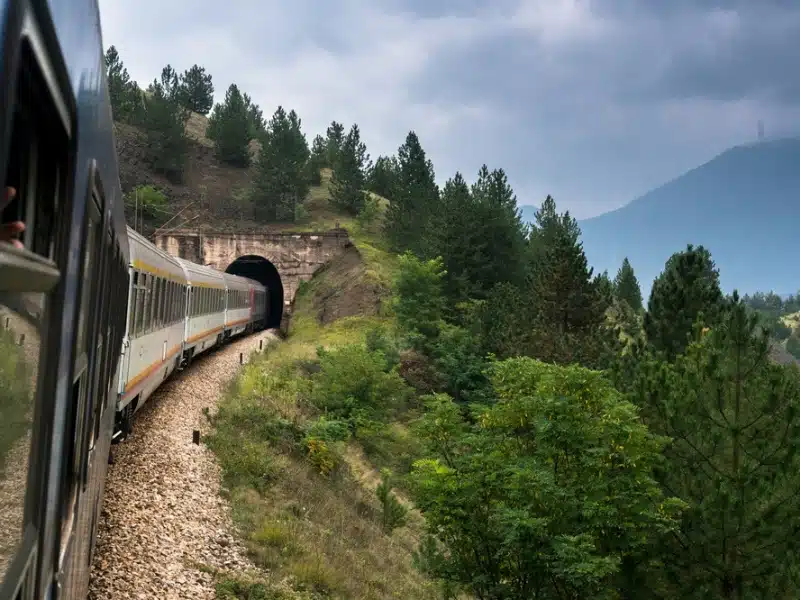
Lake Skadar
Lake Skadar, also known as Skadarsko Jezero, is the largest lake in the Balkan Peninsula, straddling the border between Montenegro and Albania. This expansive freshwater lake is beautifully tranquil, with rich biodiversity and cultural heritage, making it a popular destination for nature lovers and birdwatchers.
Lake Skadar National Park is a biodiversity hotspot, home to a wide variety of plant and animal species in its diverse landscapes, which include wetlands, forests, rocky shores, and open water. It is particularly famous for its birdlife, with over 270 bird species recorded in the area, including the Dalmatian pelican, one of the largest bird species in Europe.
The town of Virpazar, located on the northern shore of the lake, serves as a gateway to the national park and is a hub for tourism and lake tours. Our favorite guided boat tour goes to Kom Monastery and explores the lake’s diverse landscapes and wildlife along the route.
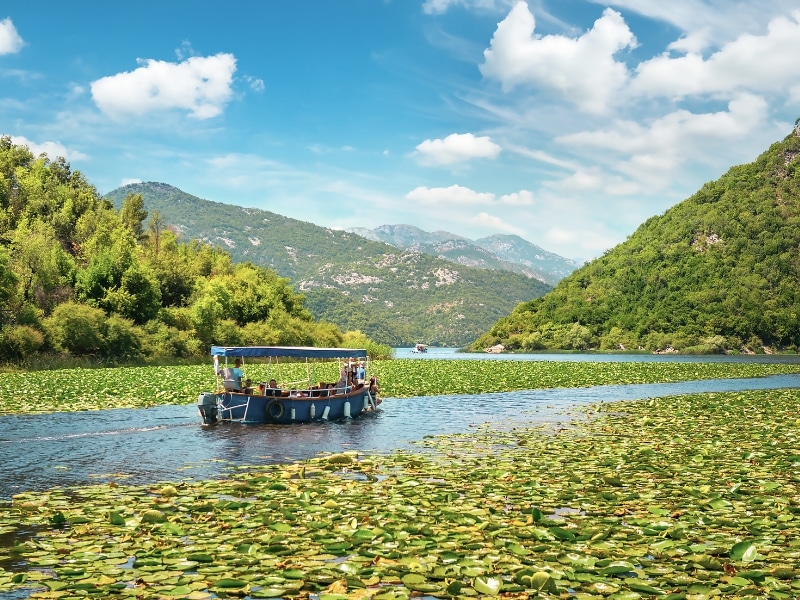
Podgorica
Podgorica, the capital and largest city of Montenegro, is a rapidly growing city situated at the confluence of the Ribnica and Morača rivers. Podgorica’s central location in Montenegro makes it a key gateway to both the Adriatic coast and the mountainous interior of the country.
It’s a curious city without the history of Kotor or the lively buzz of Budva, and maybe not worth a visit unless you’re actually passing through. This is likely if you’re traveling by bus or train, as Podgorica is the central public transport hub of the country.
The city’s history spans several millennia, and it has seen influences from various cultures and empires, including the Romans, Byzantines, Ottomans, and Venetians, each leaving a mark on the city’s cultural and architectural heritage. It was first designated as the capital of Montenegro in 1946 when it was renamed Titograd in honor of Josip Broz Tito, the communist leader of Yugoslavia.
The Podgorica of today is a messy blend of old and new, where historic landmarks coexist with modern developments. The Old Town, Stara Varoš, offers a glimpse into the city’s Ottoman past, with narrow streets, traditional houses, and mosques such as the Osmanagic Mosque. This area contrasts with the blocky Yugoslavian architecture seen in parts of the city rebuilt after World War II and the devastating 1979 earthquake.
A notable landmark in Podgorica is the Millennium Bridge, a strikingly modern suspension bridge that spans the Morača River. It has become a symbol of the city’s contemporary growth and modernization. Nearby Petrovic Castle is now home to the Museum of Contemporary Art of Montenegro and is well worth a visit.
There are several cliff-jumping spots along the river where locals gather on hot summer days. We spent several scorchingly hot afternoons outside of town at Canyon Cijevna and the so-called Niagara Waterfall, where you can swim in the crystal clear Cemi River and then enjoy dinner at the riverside Restoran Niagara.
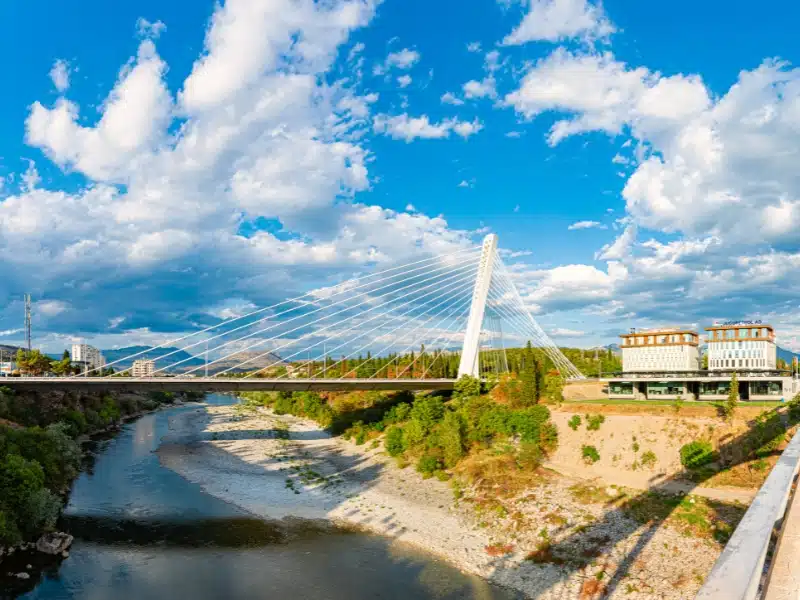
Ostrog Monastery
An hour north of Podgorica, and a popular day trip, is Ostrog Monastery, or Manastir Ostrog. One of the most significant religious and cultural landmarks in Montenegro and the wider Balkan region, the monastery is perched dramatically on a sheer cliff face of the Ostroška Greda mountain near the town of Danilovgrad.
The monastery, dedicated to the healer Saint Basil of Ostrog, is divided into two main parts: the Upper Monastery and the Lower Monastery. The Upper Monastery, the most famous part of the complex, is built into the vertical rock face at an altitude of approximately 900 meters (about 3,000 feet).
The monastery is a major pilgrimage site, particularly on major Orthodox Christian feast days, such as the feast of Saint Basil on May 12th. It attracts thousands of pilgrims and tourists each year, including people of different faiths, who are drawn to its spiritual ambiance, historical significance, and natural beauty.
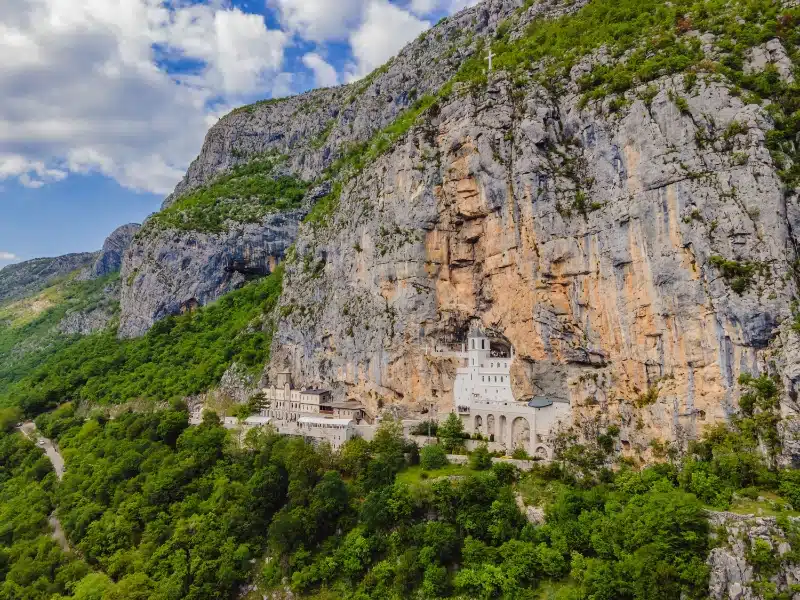
Cetinje
Cetinje is considered the historical and cultural capital of Montenegro. It served as the seat of the Montenegrin throne from the 15th century until the country joined Yugoslavia in 1918 and as the Montenegrin capital until 1946.
The Cetinje Monastery is particularly significant as it houses relics of St. Peter of Cetinje and the right hand of John the Baptist, making it one of the most important religious sites in Montenegro. The town also boasts a variety of museums, such as the National Museum of Montenegro and the Njegoš Museum, alongside numerous art galleries, all of which contribute to its cultural richness.
Architecturally, Cetinje showcases a blend of traditional Montenegrin styles and Austro-Hungarian influences, evident in its historical buildings. Many of the old embassies and royal residences from the era when Cetinje was the capital, including the Cetinje Monastery and the Palace of King Nikola, have been repurposed as museums, galleries, or administrative buildings.
The wide cobbled streets of the town’s historical center are lined with colorful facades. Many of the buildings are painted in pastel shades of blue, yellow, pink, and green, creating a lively and picturesque streetscape.
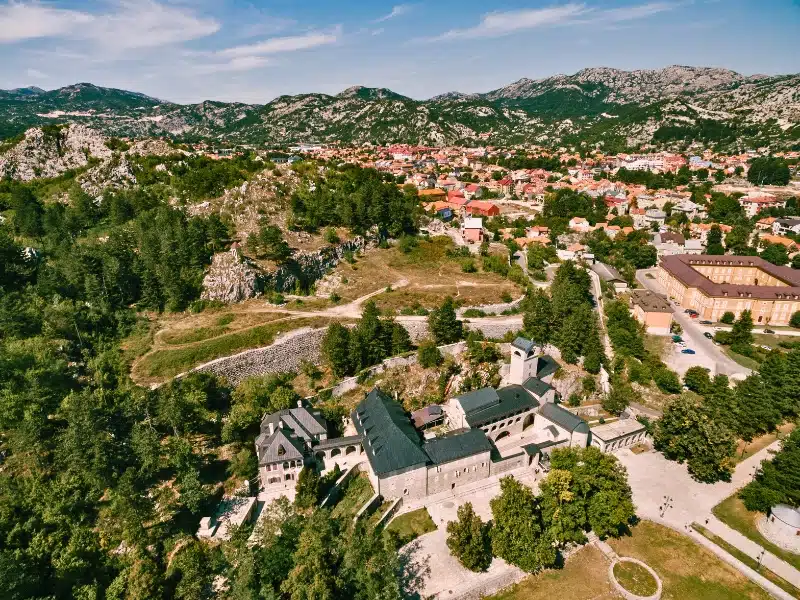
Looking for more European travel inspiration? Check out these top posts…
16 of the Best Travel Destinations in January
Our 60 Before 60 Travel Bucket List
The 16 Best Second Cities in Europe You Shouldn’t Miss
Adventure Travel Bucket List: 15 Epic Experiences in Europe
Travel Trends 2026: The Year of Mindful Escapes and Meaningful Journeys
The Ultimate Europe Travel Bucket List: 15 Classic Experiences to Inspire Your Next Trip
Love it? Pin it!
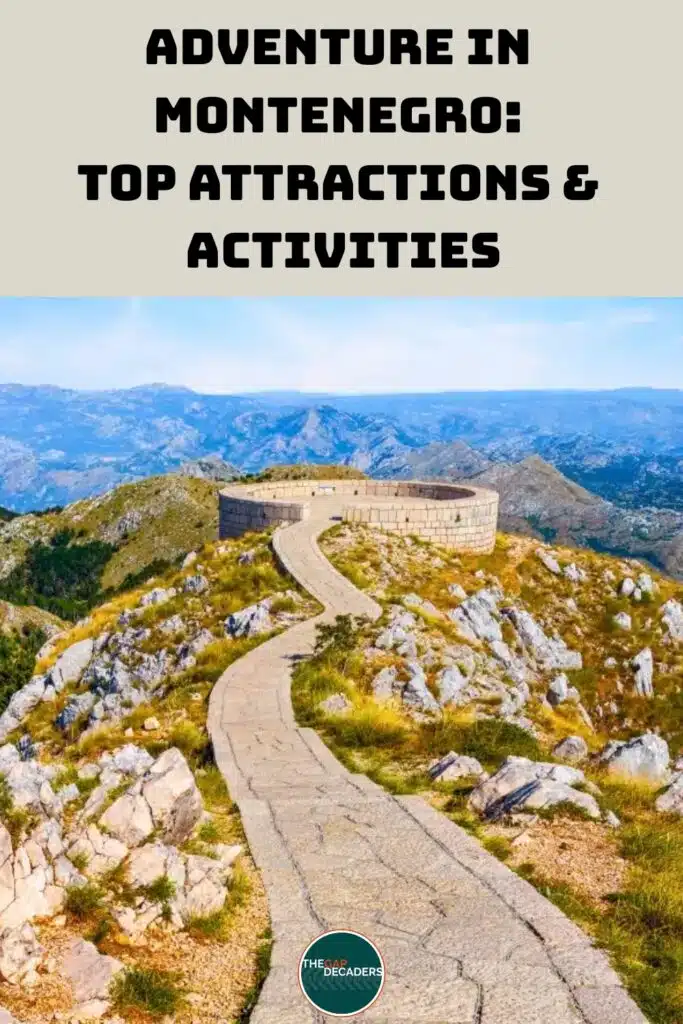
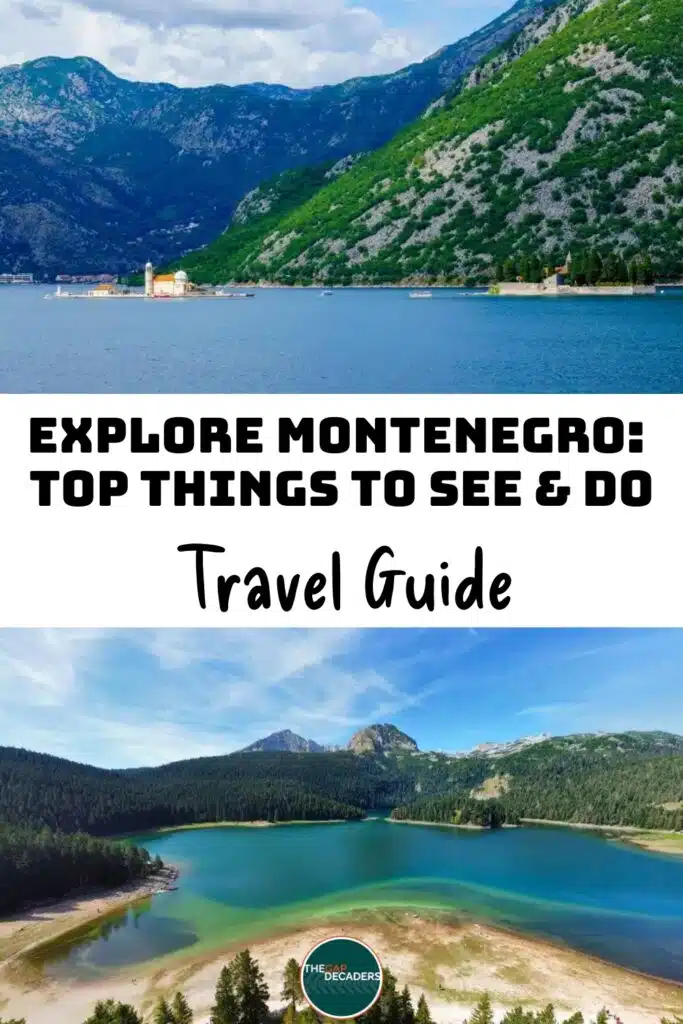

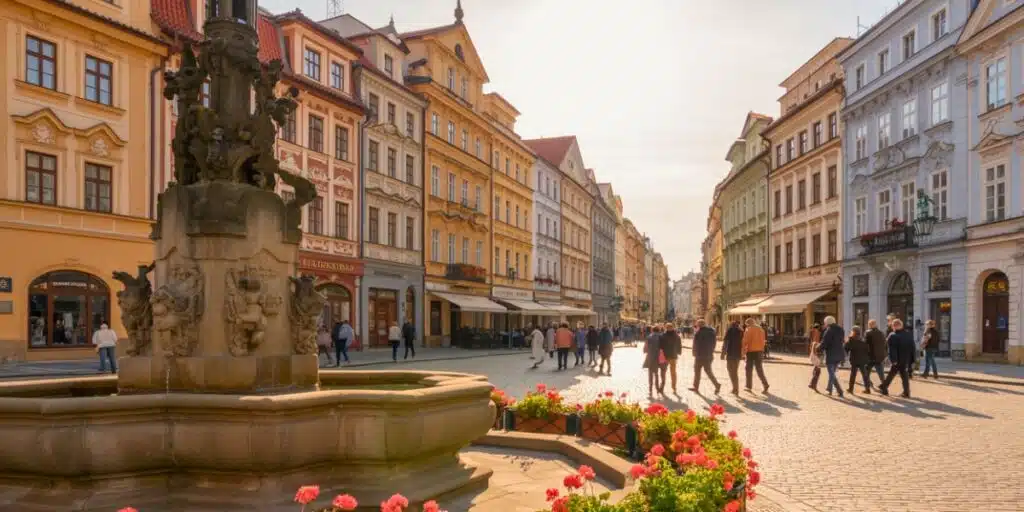
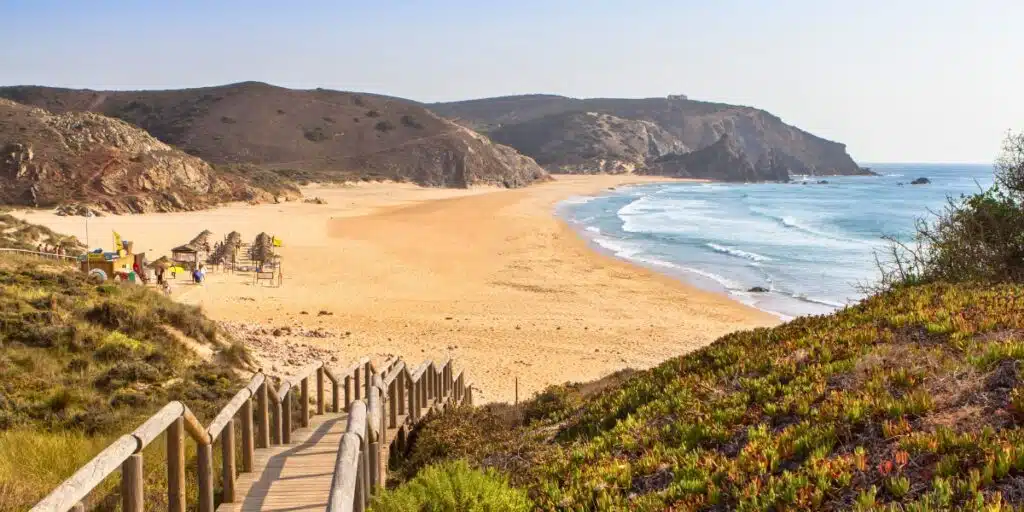
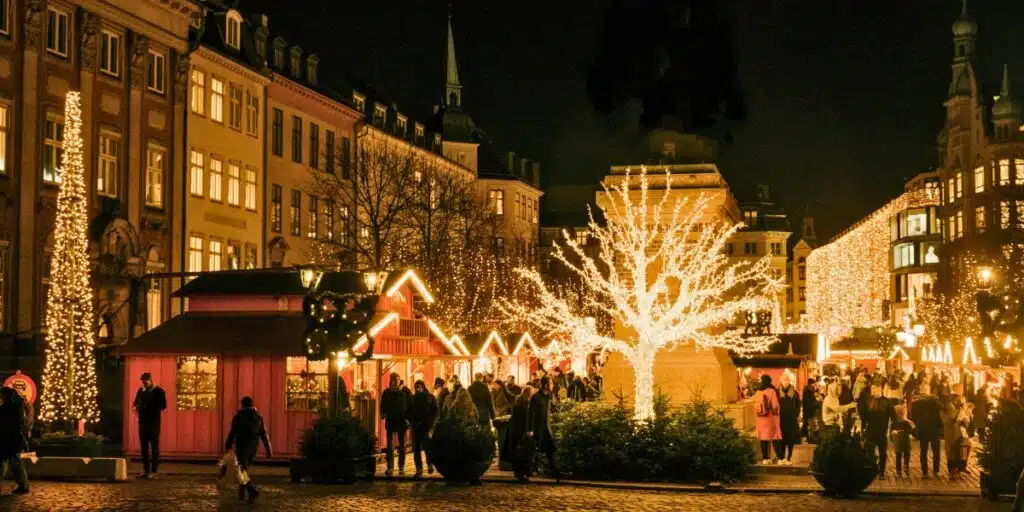

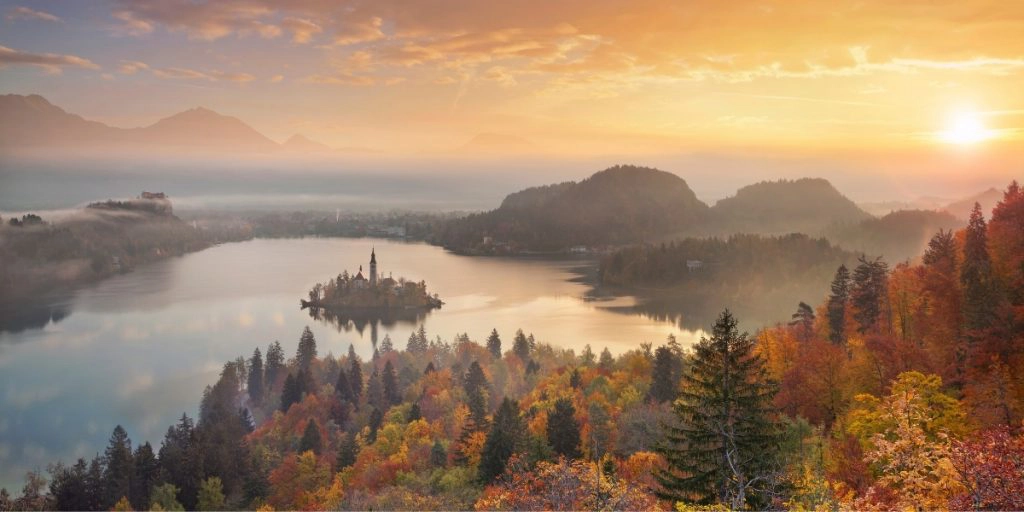
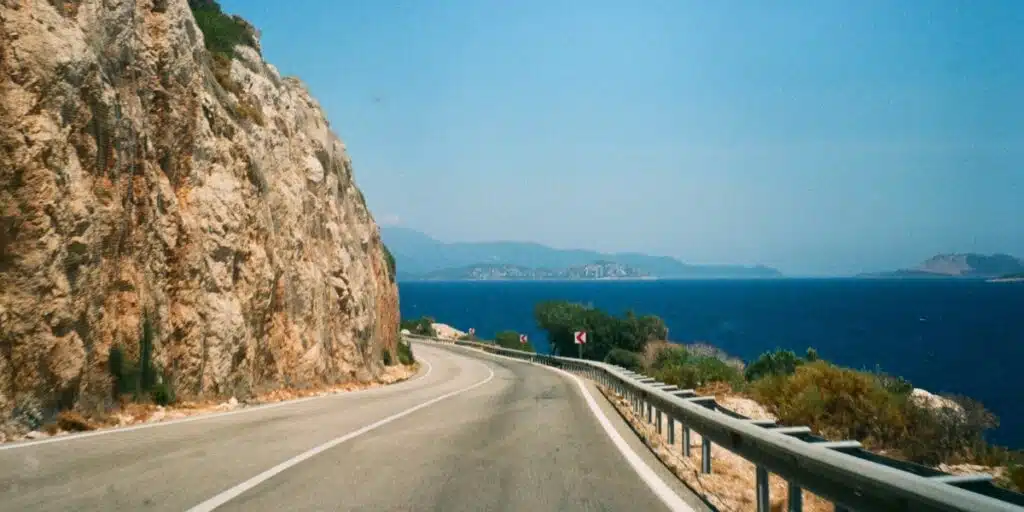
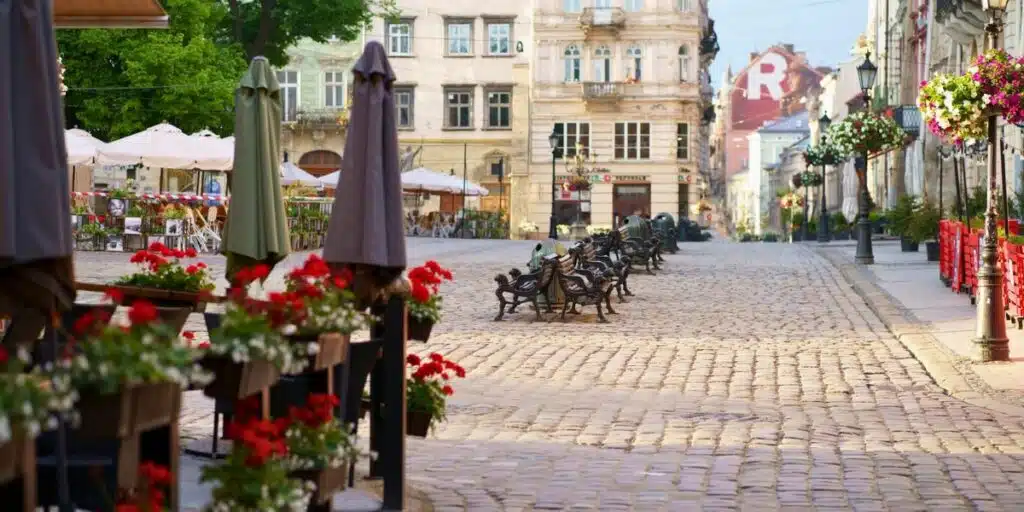
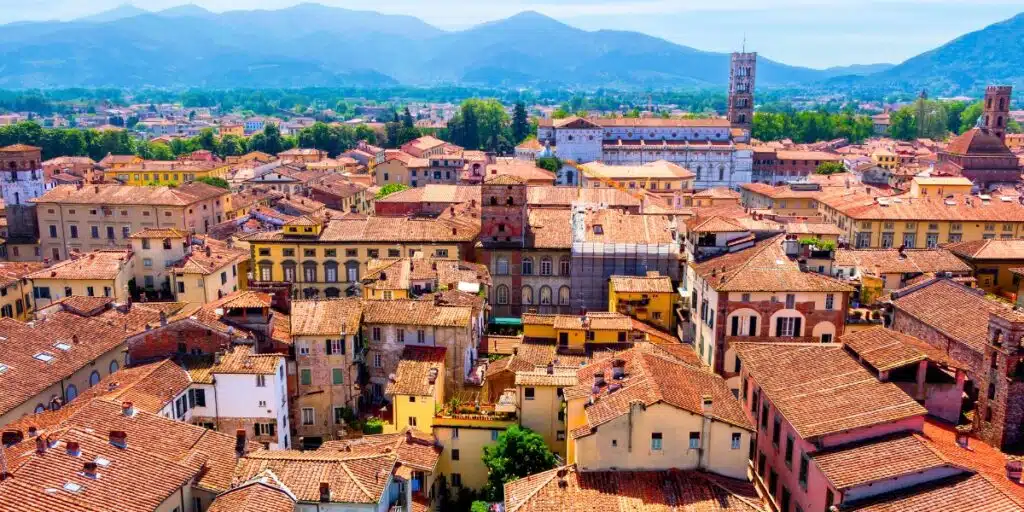
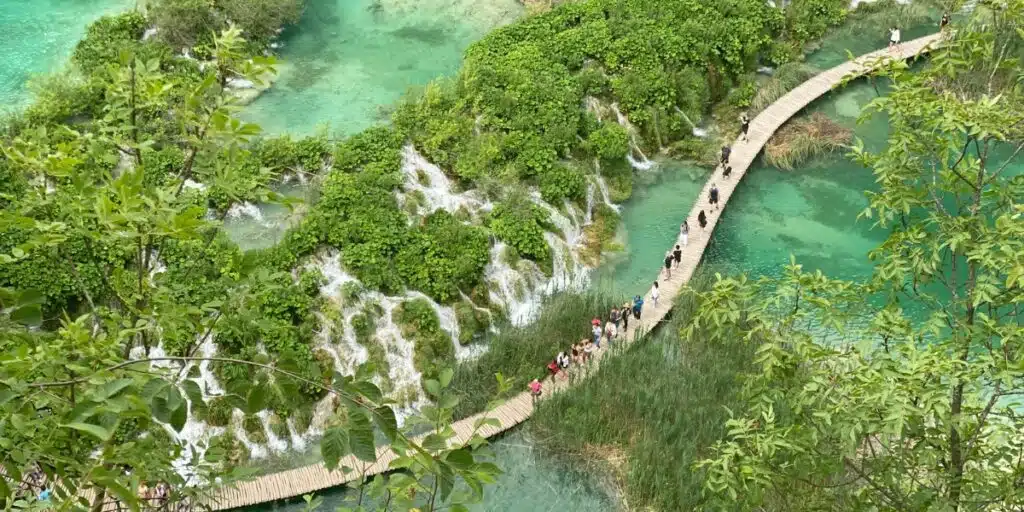
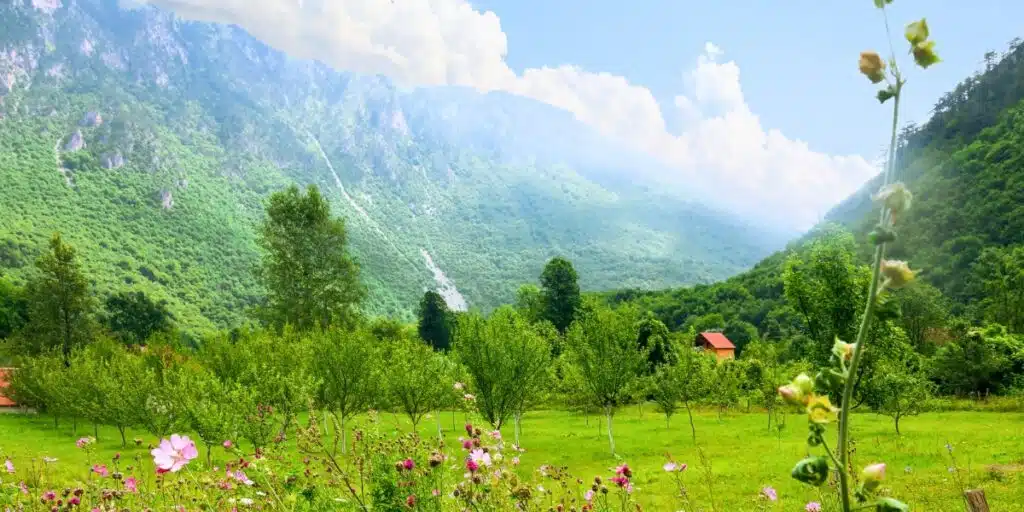
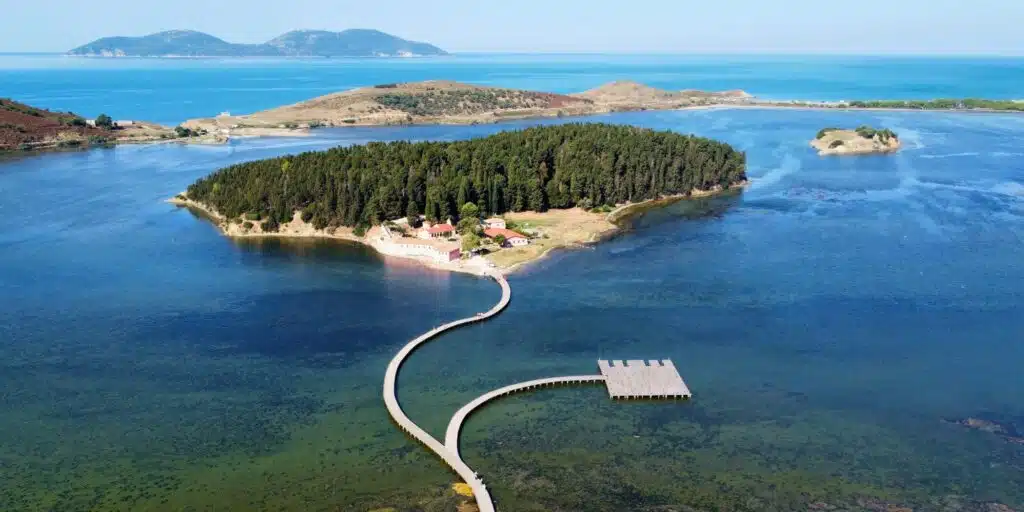
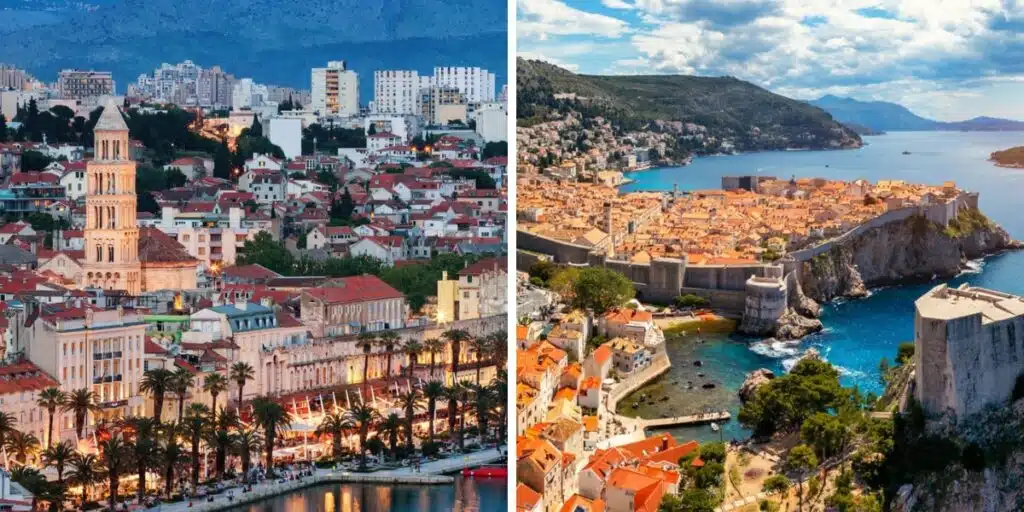
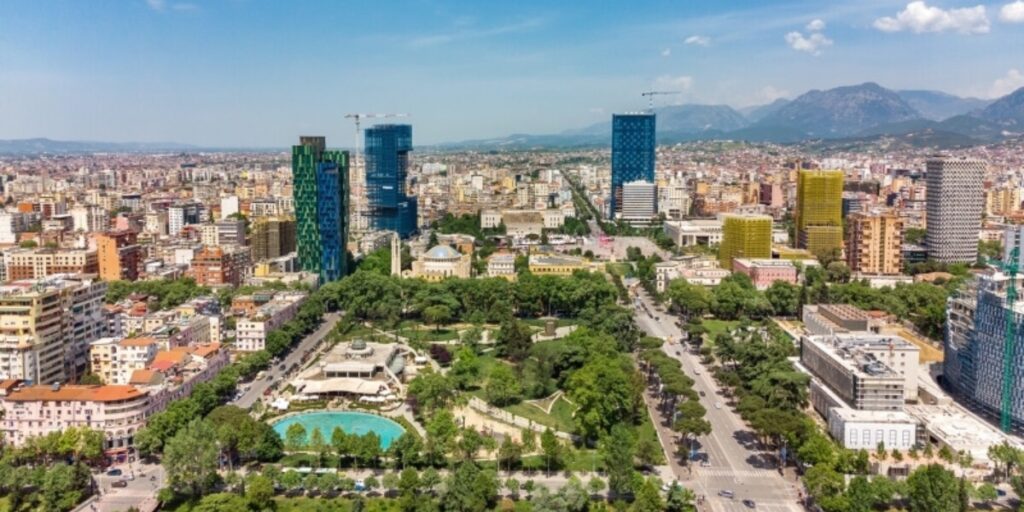
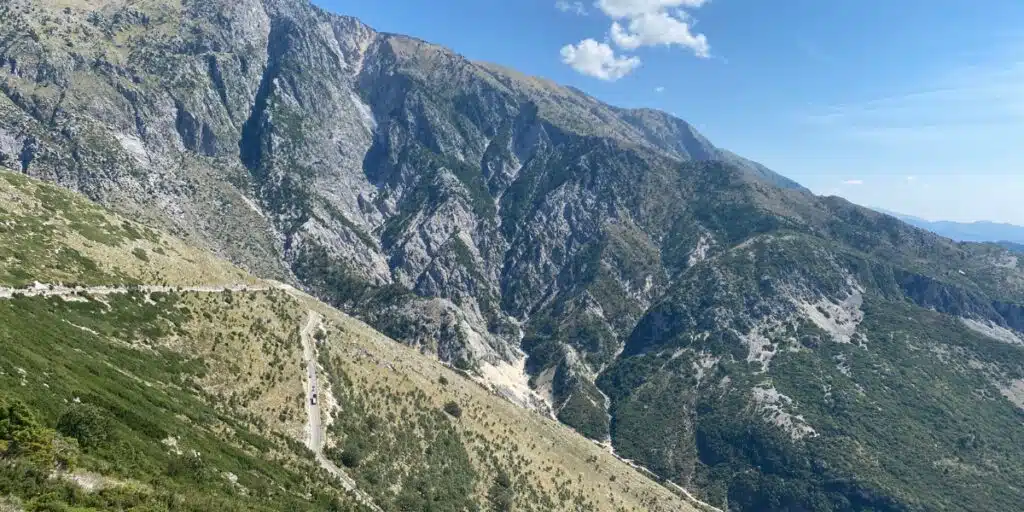
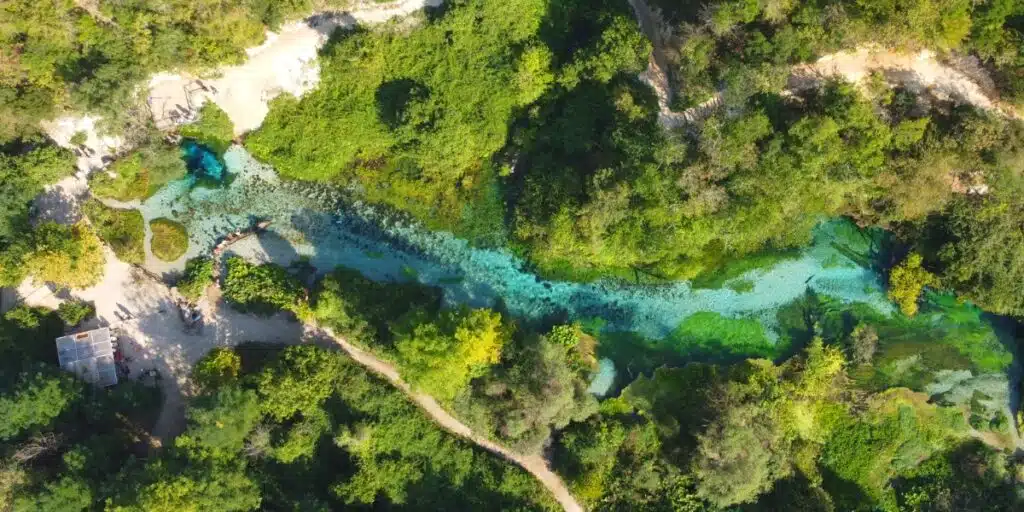
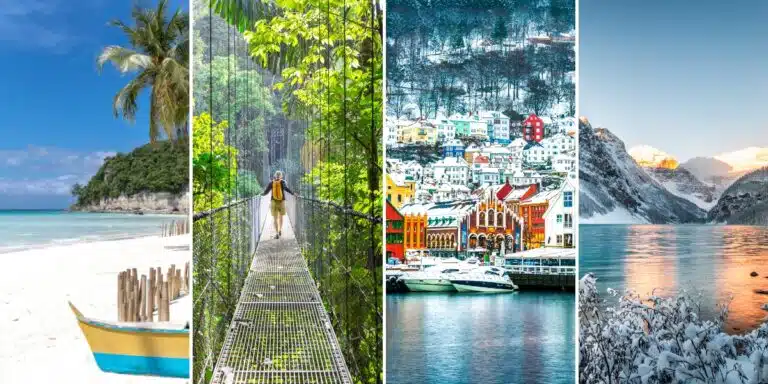

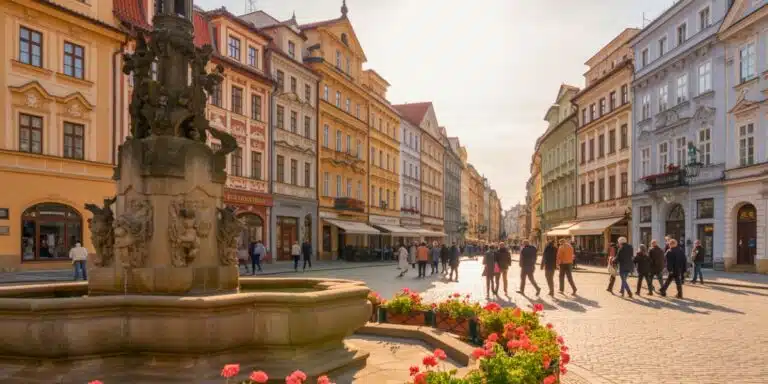
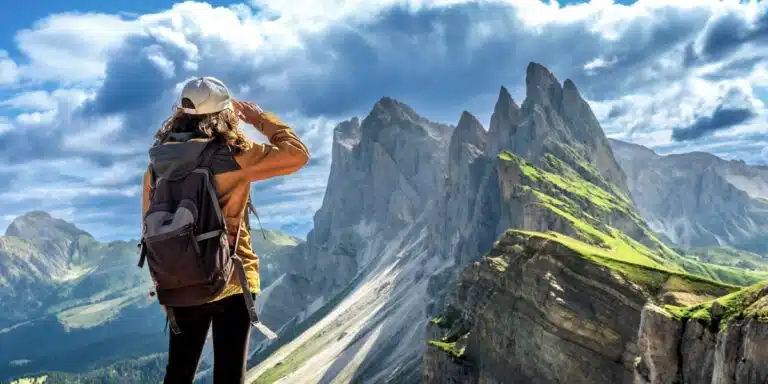
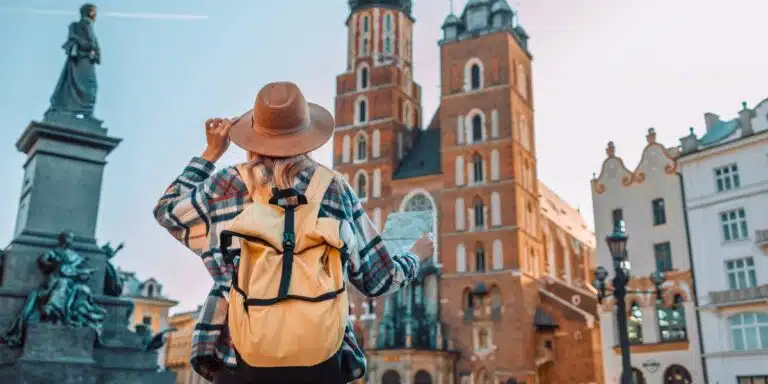

If you catch the boat over, the boatman usually gives a bit of info and there are tours available which you can book online, they’re all in the post 🙂
Hi Maxine The hike is technically easy you just need a bit of stamina and a large bottle of water on hot days! Kotor is lovely in May/June and September/October. I would try and avoid August if you can. Enjoy!
I’m planning to go too! Did anyone catch if there’s a guide or tour available for the historical spots like the Old Lady of the Rocks? Always feel like I miss out on the stories behind the places.
Maxine, Fort Vrmac is definitely doable for beginners if you pace yourself! Went there last spring and the weather was perfect—not too hot, not too busy either. Just make sure you bring water and snacks.
Hey there, Izzy! Just read through your guide on Montenegro and I’m super pumped to check out the Bay of Kotor, it looks like it’s packed with stuff to do. Quick question – for the hike to Fort Vrmac, would you say it’s beginner-friendly? I love a good hike but don’t have a ton of experience. Also, is there a particular time of year that’s best for visiting? Trying to plan my trip so I get the most out of it! Cheers!